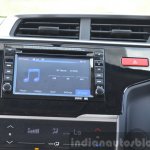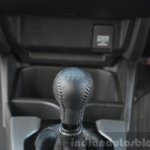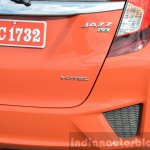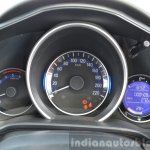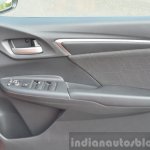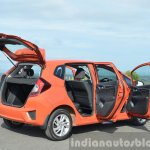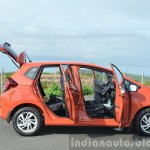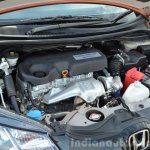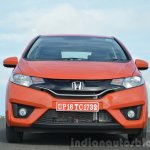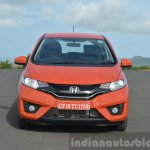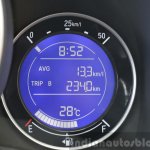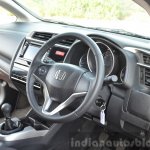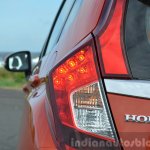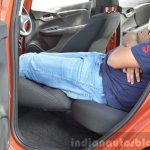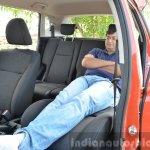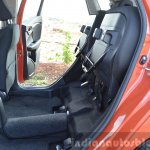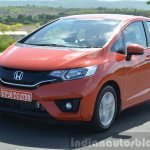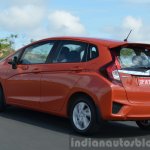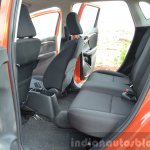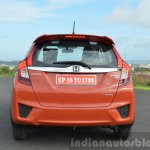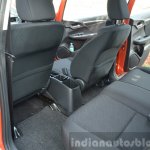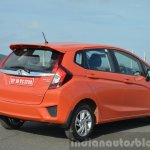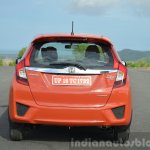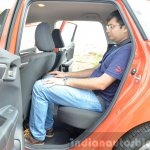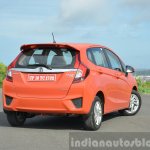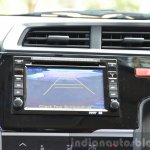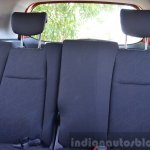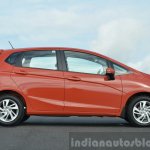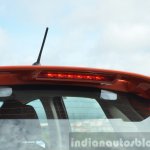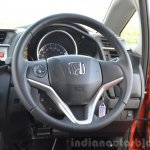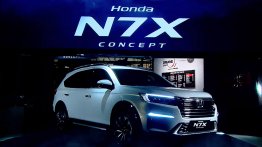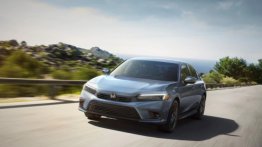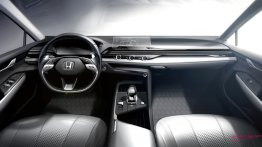Since its international launch in 2001, Honda has sold over 5.5 million units of the Jazz (known as the Fit in certain markets) worldwide. And in 14 years of being on sale, the Jazz has seen two lifecycle changes, the most recent of which was launched in Japan in September 2013.
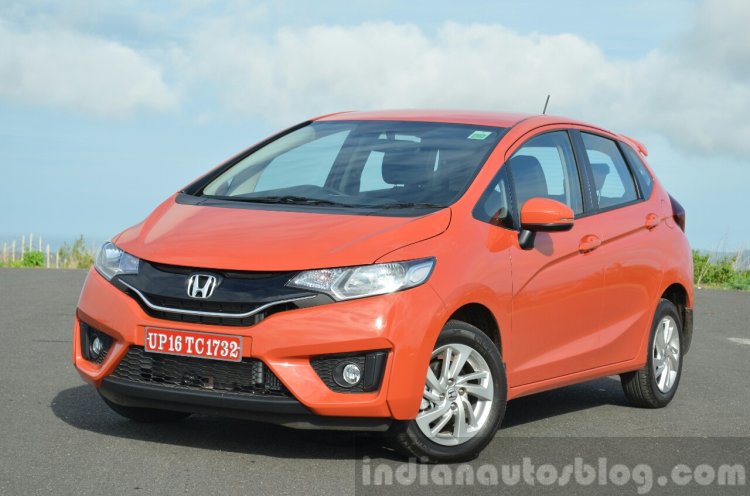
India is not new to the Jazz nameplate. Back in 2009, Honda launched the premium hatchback but in a market which was just warming up to cars like the Maruti Swift and VW Polo (which came a year later in 2010). Relatively high imported content (nearly 30 percent of the old Jazz’s components were imported), lack of a diesel engine and a market which was not open to paying INR 8 lakhs for a hatchback meant that Honda had to pull the plug on the car.
However, the Jazz will be back in India, come July 8, with increased localization (upwards of 90 percent), the potent 1.5-liter diesel engine, and space and fuel efficiency termed ‘best-in-class’. Just by offering the above, one thing is for certain: The Jazz will not face the same lukewarm response its predecessor got, but just how good is Honda’s all-new “Super Cub”? Is it worth cancelling your cheque for the Elite i20 or the Polo?
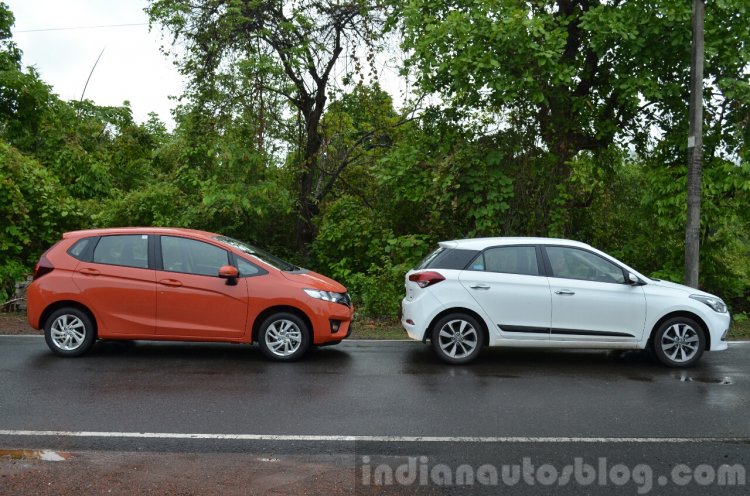
Honda Cars India say that the Jazz primarily targets the premium hatchback segment composed of the Hyundai Eite i20 and the VW Polo. That being said, the base variants of the Jazz will rival the Maruti Swift on price.
Exterior:

The third-generation Honda Jazz continues the theme of its predecessor’s part-MPV, part hatchback styling. While design is purely subjective, here are the headlines on what the Jazz brings to the table:
- City-like Solid Wing Face grille
- 15-inch alloy wheels for the top-end variants
- LED taillights
- Spoiler on the top-end VX trim
- Wing mirrors with integrated turn indicators
The new Jazz’s design is based on what Honda calls “Crossfade Monoform Exterior”. The design of the car is primarily targeted towards the 20-40 year age group who are looking for an urban commuter or a family hatchback.

According to Mr. Hiroyuki Shimizu, Senior Vice President & Director, Marketing & Sales, Honda Cars India, with the older generations of the Jazz, designers first focussed on the creating a roomy interior and then worked on the exteriors. With this third generation model though, exterior and interior design took place simultaneously so as to not have a car that looks bulky. We think Honda has done a fine job in designing the exterior of the Jazz, which looks sporty and modern, just what its target audience wants.
The tech specs of the exteriors:
- Length: 3,955 mm
- Width: 1,694 mm
- Height: 1,544 mm
- Wheelbase: 2,530 mm
- Ground clearance: 165 mm
- Tyre size: 175/65 R15 (175/70 R14 on lower variants)
To quickly put those figures in perspective, the new Jazz is 55 mm longer in overall length and 30 mm longer in wheelbase over its predecessor. The Jazz will be offered in a total of 7 colors.
Interior:
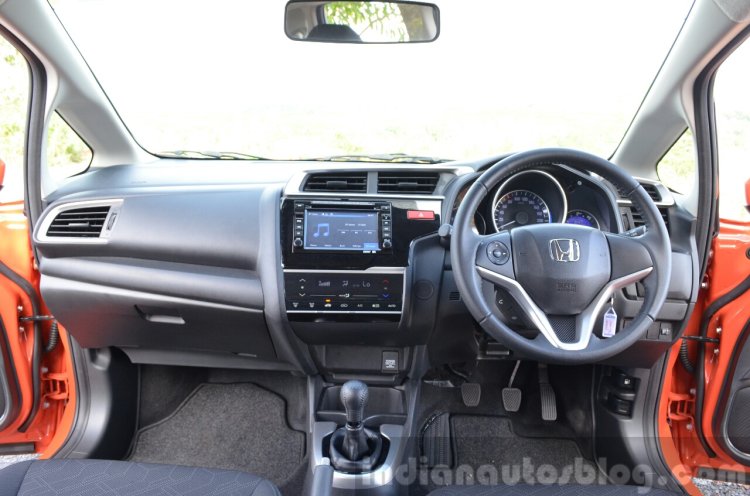
Lets start with the doors. The doors of the new Jazz, like the older model open 90 degrees. What this means is that getting in and out of the hatchback is as easy as walking into a room!
Once inside, you’ll either be greeted by beige seats, pillars and roof, or black pillars, roof and black fabric seats with white contrast stitching (reserved solely for the top-end VX trim). Either way, the dashboard is finished in black plastics, to better differentiate it from the more upmarket City.
It’s plain to see that the Jazz gets its dashboard from the new City, which it shares platforms with as well. The chunky 3-spoke steering wheel resides behind the three-pod instrument cluster, while high-quality stalks for the wiper and lights are positioned on the either side.
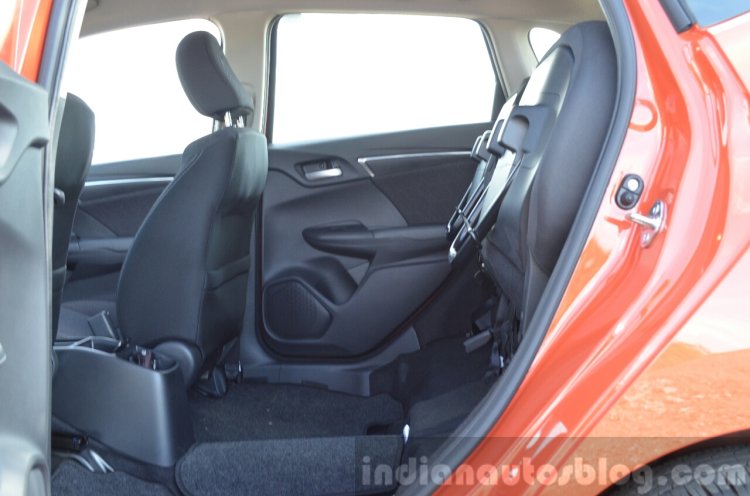
The center console is again variant specific. The top-end VX gets a 6.2-inch touchscreen unit with DVD capability apart from MP3/AUX/USB/Bluetooth and iPod connectivity. The display doubles up as the screen for the navigation system and reverse camera.
On the V trim, owners can look forward to a 5-inch non-touchscreen audio system with all the functions of the above except navigation and DVD. Instead, the 5-inch unit gets three views for the reverse camera (top, wide and rear view). Also to note is that the 6.2-inch unit’s connectors for the USB/iPod etc, are rather cheaply wired into the glovebox, like in the Mobilio. Honda could have done a much better job of integrating these connector wires, we feel.

Below the audio unit is the touch-panel for the automatic climate control, borrowed directly from the City. Cubbyholes below that complete the overall design of the dashboard. At this point, you’re probably asking about the smart entry system with a push start button, or even rear AC vents, but Honda has no plans on offering these features on even on the top-end Jazz VX!
The slot for where the engine starter button should have been is also visible on the dashboard. The lack of rear AC vents is not too much of a problem as the AC unit of the Jazz is quite a capable one. And speaking of features missing on the Jazz, we would have also liked a center armrest at the front, like in the City.
The driver seat on the top-end trims get height adjustment, and while back support is very good, the seat squab lacks thigh support for long drives. Same is the case at the rear, which gets grade-specific seats.

On the VX, Honda will offer its trademark ‘Magic Seat’ which gets a 60:40 split seat back with reclining function, and seats that can be tumbled like those in a theatre, for storing long objects, or even transporting pets. On other variants, the rear seat back is a single piece unit, which can’t be reclined.
On the Magic Seat, thigh support is just adequate for short-distance journeys, and we reckon your passengers will urge you for those frequent stops to stretch their legs on long trips. Thigh support is a shade shorter on the normal seats for reference. Another area where the Jazz gets a negative point is the middle seat at the back, which is raised a bit more than necessary. As a result, we found the Jazz's rear seat is best used for 2 adults, and maybe a child in between.
Where the Jazz scores top-points is in the rear legroom department, which is clearly best-in-class. Rear legroom in the new Jazz is up by 115 mm over the older generation model thanks to the longer wheelbase. If you need a hatchback to stretch out your legs, look no further!
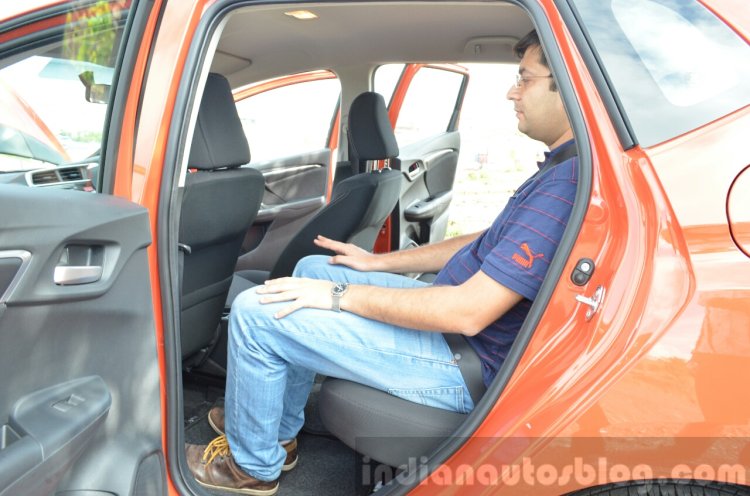
Boot space is once again best-in-class at 354 liters with all seats in place. Fold the rear seats, and the Jazz liberates 881 liters of luggage room. Adding to this practicality is the low-loading point of the boot, which doesn’t require you to strain your back to place a suitcase.
Overall, the interior of the Jazz evokes a mixed response: The Jazz has the class-leading interior space several hatchbacks lack, but the seat comfort is not something we're too happy with. Also, build quality is just about average; the Elite i20 is a step ahead, and the VW Polo continues to be the benchmark.
Engine and Gearbox:
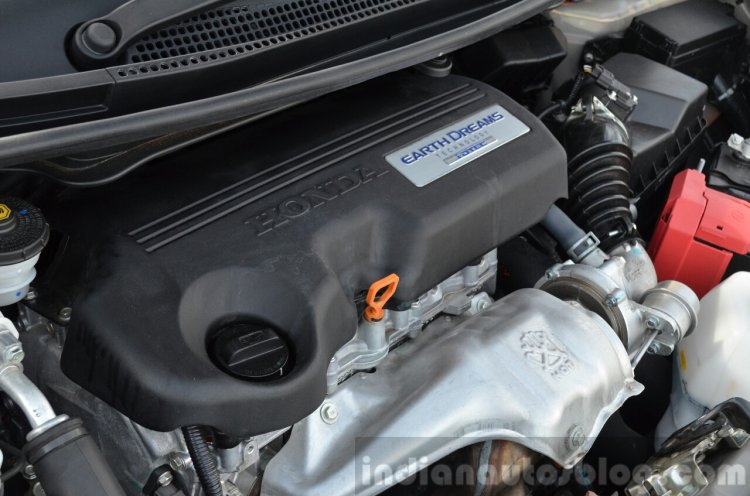
Powering the Jazz diesel is the same 1.5-liter four-cylinder i-DTEC diesel engine which is seen on the City. This unit, develops 100 PS and 200 Nm of torque and gets a 6-speed manual transmission. At this point, its pretty obvious that the powertrain is borrowed from the Honda City. However, engineers have played around with the gear ratios. The ratios are now higher, by about 8 percent claims Honda for increased efficiency and better drivability.
The weak point of this engine first. It is too noisy! The inherent noise this Earth Dreams unit is known for, under the hoods of the Amaze, Mobilio and City, continues to make its presence felt on the Jazz as well. A bit of good news is that this noise settles down at cruising speeds. For example, driving at 100 km/h in 6th gear puts the engine at a relaxed 1,800 rpm, and subdues the noise to a minimum. That being said, the Elite i20 has clearly set the benchmark in the NVH department for a diesel engine, and the Honda Earth Dreams unit comes nowhere close.
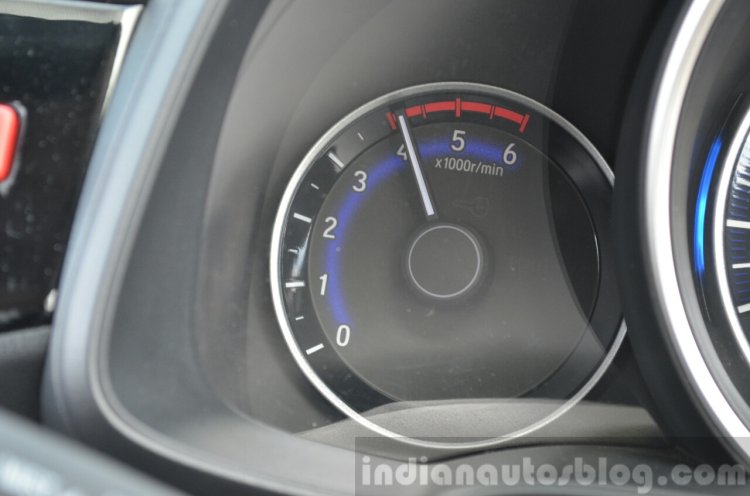
As with other Honda diesel models, the Jazz diesel doesn't have that turbo-kick you get in say a VW Polo TDI or the i20 CRDi. What you get is linear power delivery until about 3,000-3,500 rpm, at which point it is better to upshift. And what this means on the road is that you can drive the Jazz diesel as though it were a petrol-powered car, not worrying about constant downshifts for overtaking moves.
The 1.5-liter i-DTEC has more than enough grunt for city and highway driving conditions. However, enthusiasts will feel short changed as this is not a performance unit, despite the 100 PS on offer. The Polo TDI with its new 1.5-liter diesel engine feels far more involving to drive, while the i20's 1.4-liter CRDi unit is an equally capable performer.
The gearbox on the new Jazz is a delight to use with its short and snappy throws. For the most part, the Jazz doesn't ask you to downshift, which is useful as the clutch is on the heavier side.
Ride and Handling:
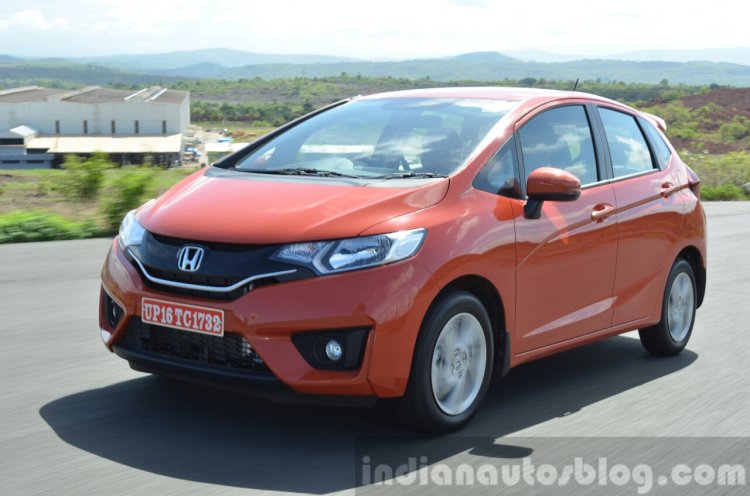
The Jazz has neutral handling characteristics, and the steering for the most part feels direct and consistent. The brushless EPS weighs progressively as the speeds build up, and in this department, it must be mentioned that Jazz feels a bit superior compared to its rivals.
While the handling is indeed neutral, the tallish proportions translate to a fair bit of body roll, and the Michelin Energy XM1's started squealing for grip at speeds as low as 60 km/h.
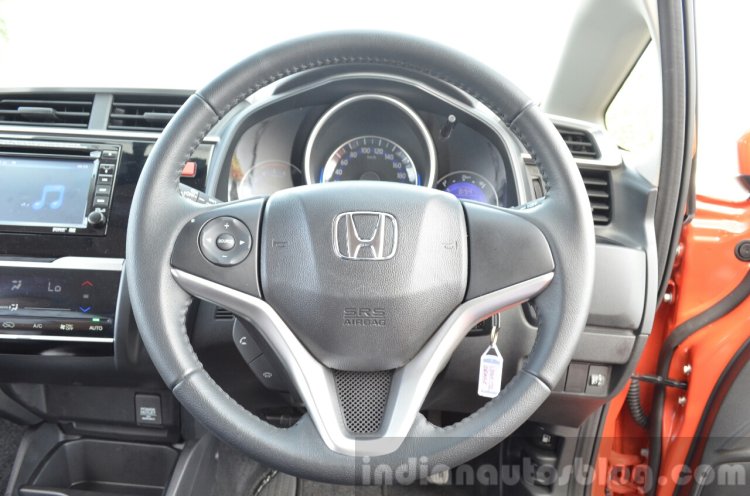
The Jazz relies on a new geometry strut-type front suspension and a high-rigidity H-shape torsion beam rear suspension. The ride quality is miles ahead of the older Jazz, and a shade better than the new City. Low-speed ride is especially good, where bumps and potholes are filtered through with minimum cabin intrusion. That being said, the Elite i20 is just a notch better in offering a plusher ride quality.
Brakes and Safety:
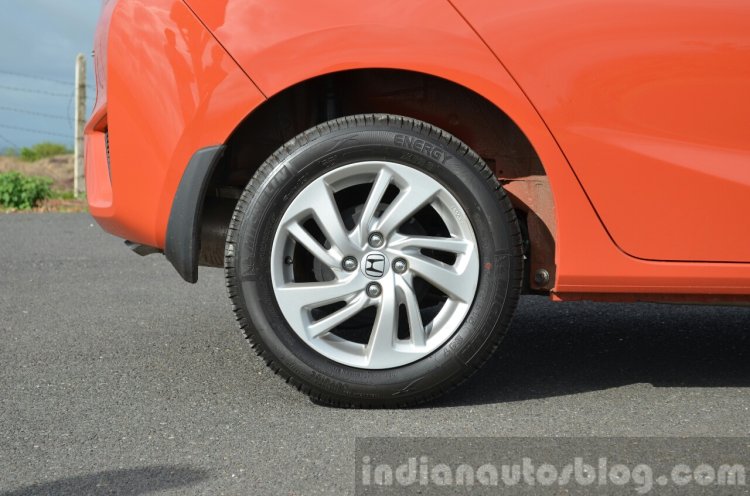
Top-end variants of the Jazz will get ABS, EBD and dual front airbags, but Honda was not forthcoming in revealing if these safety features will be offered on the base variants as well.
The Jazz gets disc brakes up front and drum brakes for the rear. Braking power is indeed impressive, especially when you consider that the car was tested under Goa’s monsoon conditions. The brake pedal has more than adequate feel, and you can clearly feel the car shedding speed even on small inputs of the center pedal.

Other noteworthy points of the new Jazz in this department include its pedestrian injury mitigation system, which is claimed to lower the risk of serious injury to pedestrians in the unlikely event of an accident, and impact sensing front headrests, which should reduce whiplash to the occupant.
Prices:
Prices for the new Jazz will be announced at its national launch on July 8, 2015. We expect the Jazz diesel to start from about INR 6.5-6.7 lakhs, ex-Showroom, New Delhi, thus putting it about INR 10,000-30,000 more than the Elite i20 Era diesel. However, Honda is known for standardizing ABS across its diesel models, and this should be a good reason for the premium pricing.
Fuel Efficiency:
Honda claims an ARAI-rated fuel efficiency of 27.3 km/l for the Jazz diesel, making it India’s second most fuel efficient diesel passenger vehicle. The 800cc two-cylinder Celerio pips the Jazz by a small margin of 0.32 km/l.
Our drive under city conditions saw the Jazz easily return 13.3 km/l on the on-board display. While we didn’t get the chance to do a full efficiency test, the Jazz diesel should be capable of 20-22 km/l on highways thanks to its tall 6th gear. For reference, the Jazz diesel ticks about 1,800 rpm in 6th gear at 100 km/h.
Verdict:
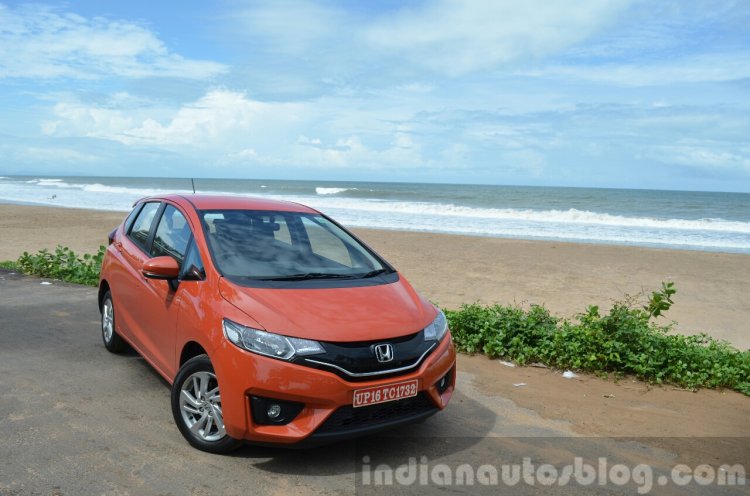
Who should buy the new Honda Jazz? Someone looking mainly for space and versatility combined in a package with good fuel efficiency, road dynamics and a decent feature list.
Who should not buy the new Honda Jazz? Anyone looking for performance, or premium build quality.
That pretty much summarizes our verdict of the new Jazz. While the overall package is no doubt rather good, there is plenty of room for improvement as far as some areas go. The feature list could have been better, the inherent engine noise of the 1.5-liter i-DTEC unit should be better controlled and the seats could surely do with better thigh support. These small downsides are further accentuated when you consider what the competition is offering.
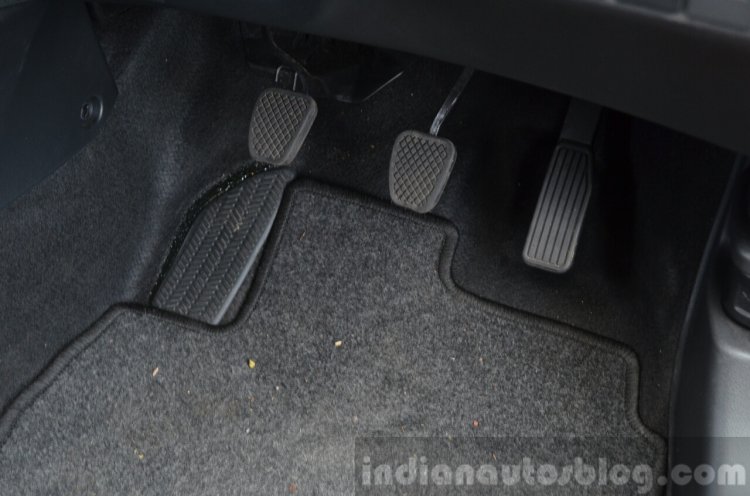
On the one hand, the VW Polo has established its solid build quality, and punchy 1.5-liter TDI diesel engine, the best performer in this category. But the star child seems to be the Elite i20, which delivers a mix of comfortable interiors, solid build quality, a lengthy feature list and class-leading NVH levels for a diesel engine.
Coming back to the question, should you cancel your i20 or Polo booking, and opt for the Jazz? We wouldn't recommend you rush with that cancellation, especially as prices for the Jazz remain unannounced.


